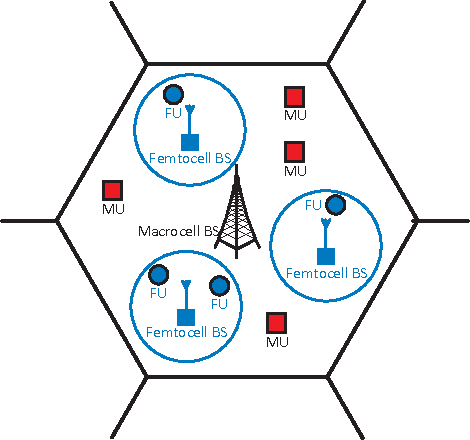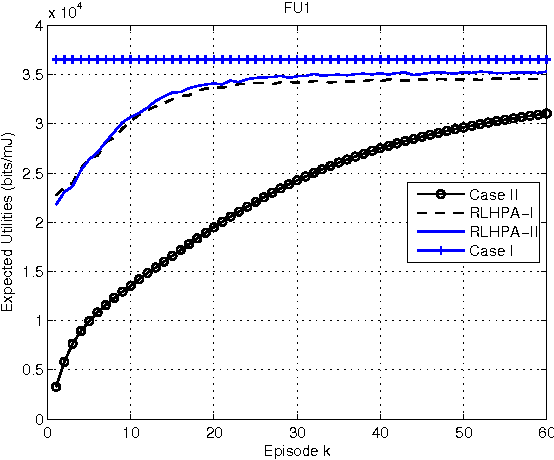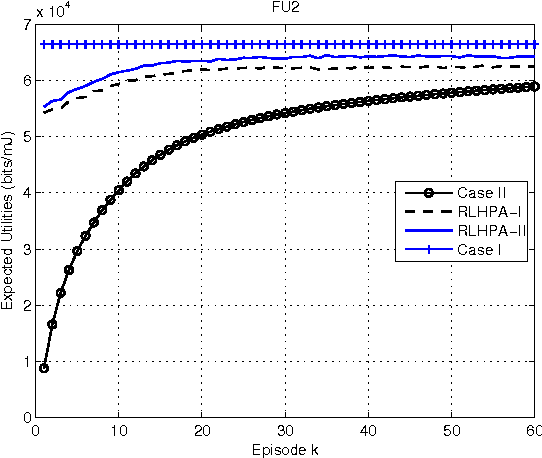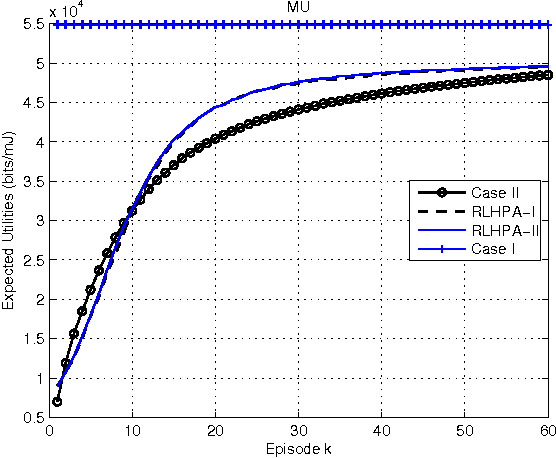On Improving Energy Efficiency within Green Femtocell Networks: A Hierarchical Reinforcement Learning Approach
Paper and Code
Mar 13, 2013



One of the efficient solutions of improving coverage and increasing capacity in cellular networks is the deployment of femtocells. As the cellular networks are becoming more complex, energy consumption of whole network infrastructure is becoming important in terms of both operational costs and environmental impacts. This paper investigates energy efficiency of two-tier femtocell networks through combining game theory and stochastic learning. With the Stackelberg game formulation, a hierarchical reinforcement learning framework is applied for studying the joint expected utility maximization of macrocells and femtocells subject to the minimum signal-to-interference-plus-noise-ratio requirements. In the learning procedure, the macrocells act as leaders and the femtocells are followers. At each time step, the leaders commit to dynamic strategies based on the best responses of the followers, while the followers compete against each other with no further information but the leaders' transmission parameters. In this paper, we propose two reinforcement learning based intelligent algorithms to schedule each cell's stochastic power levels. Numerical experiments are presented to validate the investigations. The results show that the two learning algorithms substantially improve the energy efficiency of the femtocell networks.
 Add to Chrome
Add to Chrome Add to Firefox
Add to Firefox Add to Edge
Add to Edge